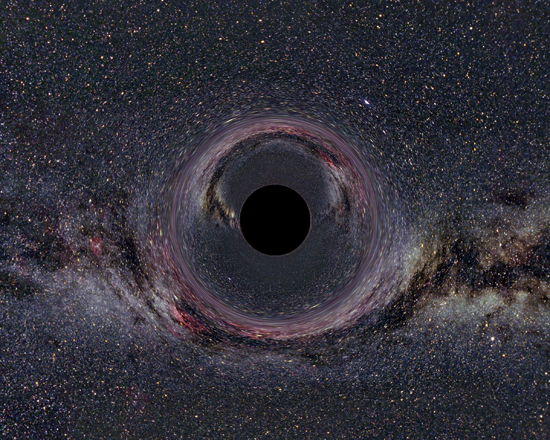Astronomers Detect Supermassive Black Holes Larger Than Any Yet Seen
In addition to being terrifying celestial holes from which not even light can escape, scientists believe that the incredible gravity exerted by black holes has played a foundational role in the creation of galaxies. That theory might get refined even further, now that astronomers at the University of California, Berkeley have discovered the largest black holes ever detected. These monsters are billions of times larger than our sun, and more than three times larger than the previous record holder.
The discovery was made by Nicholas J. McConnell with his thesis advisor Chung-Pei Ma. The smaller of the two black holes they observed is about at the center of a galaxy called NGC 3842, which is some 331 million light-years away in the constellation Leo. From their observations, the team determined that this black hole weighed as much as 9.7 billion suns. For comparison, the black hole at the center of the M87 galaxy in Virgo is thought to weigh 6.3 billion solar masses and was considered the largest until McConnell’s research.
However, the NGC 3842 is pawltry compared to the black hole the team observed at the heart of galaxy NGC 4889. This black hole is thought to weigh 21 billion solar masses, well and above the largest ever found. Thankfully, this giant is 336 million light-years away in the constellation Coma.
Now, you might be wondering how these scientists were able to determine the size of these black holes. Taking observations from telescopes in Hawaii and Texas, the team looked at how fast stars were moving around the black holes at the center of the galaxies. By determining the speed of the stars around the black holes, the scientists could determine how much gravity was required to keep hold of them. The faster the stars, the more gravity required. And since the more massive an object, the more gravity it exerts on objects around it, the team was able to get a good idea of how big these black holes are.
Using this information, scientists aim to gain a better understanding of the formation of galaxies, as well as the forces that shaped the early universe. After all, these black holes are exceptionally large, billions of times more massive than a black hole formed from a collapsed star. This suggests that these supermassive black holes have not only been around for a long time, but could have merged with other black holes or taken in huge amounts of matter from other sources.
Regardless of how they’ve grown, it’s certain that they’ve been a force in our universe for a long, long time.
(via NYTimes)
- Some black holes may be older than the universe. Wait, what?
- Scientists directly observe disk around black hole for the first time
- Voorwerps are weird, and probably caused by black holes
- We’ve got a problem with enormous holes on this planet as well
Have a tip we should know? tips@themarysue.com
